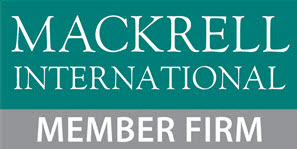By Jeffrey S. Tarr, M.S.
In our last two Newsletters, Part I of this article addressed the upfront consideration of who will be on your acquisition “team” and the important consideration of using a “limited liability” entity to purchase the real estate investment, and Part II addressed the purchase and sale agreement. Part I and Part II of this article are available at sussmanshank.com – on the tool bar, click on “Articles,” then click on “Newsletters,” and then click on “Winter 2016 Newsletter” for Part I and “Spring 2017 Newsletter” for Part II.
In this Part III, I will address the due diligence process, closing the purchase transaction, and some post-closing matters in real estate investment transactions.
1. Due Diligence
There are several different types of due diligence, some which a buyer should undertake when purchasing any real estate, and others which depend on the type of real estate being purchased or the purpose for which the real estate is being purchased.
Typical types of due diligence that should be undertaken with respect to all real estate acquisitions include the following:
(a) Review of condition of title to the real estate. This typically involves reviewing a preliminary title report for the real estate issued by a title company (which often also acts as the escrow in the purchase transaction) to ascertain the various different encumbrances and other matters of title record affecting the real estate, including financial encumbrances (e.g., deeds of trust, mortgages, tax liens), easements, rights-of-way, covenants, conditions and restrictions, road or sidewalk dedications, etc. Often, this type of due diligence involves pulling and reviewing the individual documents recorded against the real estate to create the encumbrances (which are listed on the preliminary title report) to understand their terms and how such terms may affect the buyer’s intended purpose, use or development of the real estate.
(b) Physical inspection of the real estate. This typically involves a physical inspection of the improvements (e.g., buildings) located on the real estate to ascertain their current condition and whether there are any needed maintenance, repairs or replacements. Often, a buyer will hire a professional inspector to conduct a thorough inspection of the improvements and prepare an inspection report detailing the condition of the improvements and any needed maintenance, repairs or replacements.
(c) Environmental assessment of environmental condition of the real estate. Because the costs of remediating any hazardous condition on real estate can be very costly, it is important for a buyer to ascertain the environmental condition of the real estate to avoid unintentionally stepping into such remediation costs. Typically, a buyer will want to hire an environmental consultant to conduct a Phase I environmental site assessment of the real estate. If the Phase I environmental site assessment identifies a potential contamination problem, a buyer will then want the environmental consultant to conduct a Phase II environmental site assessment of the real estate. A Phase I environmental site assessment typically is noninvasive and involves a review of records, a site inspection, and interviews with owners, occupants, neighbors and local government officials. A Phase II environmental site assessment typically is invasive, involving collection and testing of soil or groundwater samples or materials used in the construction of any improvement located on the real estate.
(d) Review rent roll, leases and financial statements relating to the real estate. When purchasing real estate for investment purposes, often the investor is looking for income producing real estate, which means the real estate will have tenants. The quality and quantity of the income to be derived from the real estate will depend on several factors, including the vacancy rate, the rental rates, the quality of the tenants, the length of the remaining terms of the leases, and the operating expenses for the real estate. A buyer will want to obtain from the seller and review a current rent roll, copies of the currently in effect leases, and a few years (e.g., the most current year and the immediately prior two years) of statements of the income and operating expenses for the real estate to ascertain the quality and quantity of the income to be derived from the real estate.
2. Closing the Purchase Transaction
The closing of most real estate transactions is handled through an independent third-party escrow. Often, the escrow will be the title company that is handling the title work for the real estate transaction.
Typically, the closing will occur on a fixed date agreed to by the parties in the purchase and sale agreement, but after all of the buyer’s conditions to closing (often referred to as “contingencies”) have been satisfied or waived by the buyer. It is not uncommon that the parties mutually agree in writing to extend the initial fixed closing date for various reasons, including the buyer’s need of more time to complete the buyer’s due diligence review of the real estate to satisfy its contingencies.
At closing, the parties will execute and deposit into escrow a series of documents necessary to close the real estate transaction. Often, the closing documents include the following: a deed for transferring title of the real estate from the seller to the buyer; an assignment and assumption instrument for the seller to assign to the buyer, and the buyer to assume, the tenant leases, service contracts and other contracts and agreements relating to the operation or use of the real estate; loan documents, if the buyer is using acquisition financing to purchase the real estate; a Certificate of Nonforeign Status (often referred to as a “FIRPTA Affidavit”), pursuant to which the seller attests to its nonforeign status for federal income tax withholding purposes; and escrow instructions, pursuant to which the seller and the buyer instruct the escrow on the manner in which to close the purchase transaction.
In addition, at closing escrow will determine all prorations between the parties and adjustments to the purchase price. Typically, real property taxes, rents and operating expenses for the real estate are prorated as of the closing date, with adjustments made to the purchase price to take into account these prorations. In addition, security deposits under tenant leases are transferred from the seller to the buyer at closing (which is typically done by crediting the aggregate amount of the security deposits against the purchase price). The escrow will produce a “Settlement Statement” (sometimes called a “Closing Statement”) for each party that will show all of the economics of the purchase transaction, including the prorations, transfer of security deposits, and adjustments. Each party will approve his/her/its Settlement Statement before the purchase transaction is closed.
Once all monies and documents necessary for the closing have been deposited into the escrow and the parties have reviewed and approved their respective Settlement Statements, the escrow will close the purchase transaction by recording the deed transferring the real estate from the seller to the buyer, releasing the adjusted purchase price to the seller, and releasing and delivering to each party the other applicable closing documents.
3. Some Post-Closing Matters
Once the real estate transaction is closed, possession of the real estate is typically immediately turned over to the buyer (subject to the possessory rights of tenants with leases for space in the real estate with terms expiring after the closing). Typically, from and after the closing date, all income and expenses arising from the real estate belong to the buyer.
Two of the most crucial things that should occur immediately after the closing are making sure adequate management is in place for the newly acquired real estate investment (which typically involves hiring a property manager) and letting the tenants know that ownership of the real estate has changed hands (providing contact information for the new landlord or property manager and providing information on where to pay the rent going forward). If the buyer intends to use an outside property manager to operate the real estate for the buyer after the closing of the purchase transaction, in order to have a seamless transition of the real estate from the seller to the buyer, prior to the closing the buyer will want to seek out candidates, interview such candidates, and select and retain a property manager to take over management of the real estate from and after the closing.
4. Conclusion
The information in Parts I, II and III of this article is meant to provide a flavor of what is involved in connection with engaging in and closing a successful real estate transaction to purchase investment real estate. There are many more issues and considerations that often come to bear in real estate transactions that have not been discussed in this article. If, however, you properly staff your “team,” you will have the necessary professional help to permit you to engage in and successfully complete a real estate investment transaction.
Please contact Jeffrey Tarr (at (503) 227-1111 or jtarr@sussmanshank.com) with any questions about, or to assist you in connection with, your real estate investment transaction.


